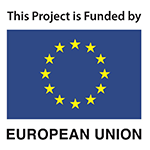The brief.
The brief for this project was to develop a story-led educational resource to help young people here in the UK understand and engage with some of the complex political issues behind the Israeli and Palestinian Occupied Territories’ conflict. The ambition of this project is to utilise storytelling techniques to help ‘shift’ people’s perspectives. By listening to the stories told by young people living in the region, each representing a different perspective, we help the audience to try to see through their eyes. Classroom activities and further materials were designed specifically to help young people to go deeper with this material.
Shifting perspectives
The big question is how do we help young people here in the UK understand and engage with one of the most complex political situations in our world today, without getting caught up in a simplistic good guys vs bad guys narrative?
The challenge of this project is to overcome just that, and we deliver on this ambition through authentic storytelling and dynamic visual storytelling techniques.
By capturing authentic stories of young people in the region, we help audiences see through a different perspective, encouraging them to try and understand why each of the young four people have come to their different worldviews. The additional educational resources enable students to stand in the shoes of a teenager from Israel or Occupied Palestinian Territories, seeing from their eyes, and engaging more deeply with the nuances of this multi-layered and complex conflict.

telling the history
Creating a clear and engaging narrative to help explain one of the most contested and politicised historical interpretation of the events that have led to the current situation between Israel and oPT was always going to be a real challenge in this resource. For the history video we used dynamic storytelling techniques against the backdrop of the barrier that separates the two sides to help make sense of how the divisions we see today have come about. The tension for this storytelling approach was to hold the tension between keeping the historical section simple and clear for young people to understand, but also holding onto some of the layers of complexities that lie behind the conflict in the region today.

Logo
The creation of the animated logo is designed to reflect the shifting perspectives that focus in and out, to finally reveal the logo in its full clarity. The music and feel for this logo intro was chosen to communicate a serious and urgent tone to the whole resource, which is picked up in different parts of the video series. The urgency and seriousness of this logo intro is to encourage audiences to want to find out more and take this seriously. Although this is aimed at a young people’s audience, our testing and research has shown this has worked well with target audiences.
power of authentic storytelling
In the context of a highly politically charged situation, storytelling can help lead towards authentic dialogue. While we may agree or disagree with other people’s points of view or politics, we cannot deny their story. This is why authentic storytelling not only helps to create an exciting and engaging educational resource, but also serves as a means to help young people to understand other people’s worldviews.
At Ministory we are absolutely delighted to work alongside CAFOD who runs projects in the region to bring young people together to see from different perspectives. In a region where different ethnic groups seldom mix, our hope is that our storytelling resources can help in some small way to help people see from different perspectives, to create the space for authentic dialogue to take place, to help clear a path towards lasting peace.
In collaboration with



How can we help you?
Do you have a project that you would like to talk about?


